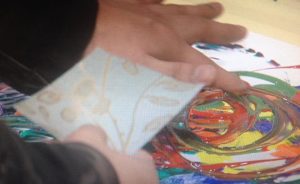PTSD: Treatment through Art
PTSD: Treatment through Art
Contributed by Kris Baydalla-Galasso
A trend that has swept the country over the past three years might have more value than you think! Coloring books, once looked at as an entertainment medium for children, have expanded to a new market: adults in need of a break. Adult Coloring Books come in a variety of images – from intricate mandala designs to floral patterns and more. According to Psychology Today, Carl Jung used coloring as a therapy technique in his practices a century ago. His methods have matured and we now know even more about the human brain and the positive impact of simple coloring in the lines.
Though it may seem like a child’s activity, coloring actually increases our focus and intellectual acuity. Coloring can help simplify the process of problem solving. It can alleviate stress and help relax those with anxiety.
According to the American Art Therapy Association, utilizing art in treatment sessions for PTSD sufferers can help relieve much of the trauma surrounding the memories. Veterans are often able to express these dark and terrifying memories through imagery when verbalization of the time proves impossible.
Art therapy encourages veterans to “talk about it” without saying a word. Art therapy offers a means of expression and possibly even resolution for veterans who might find their reality unspeakable.
As with any traumatic event, the greatest success stories often belong to those who employ a multifaceted therapeutic approach. While art therapy might not be right for every veteran suffering from PTSD, many will find themselves benefiting from the art therapy relaxation techniques. Military personnel with PTSD who have used art therapy have reported a reduced level of anxiety, better control over mood disorders often associated with PTSD, a reduction in disruptive behaviors that prohibit daily functioning, an increased ability to verbalize and then resolve traumatic events and an overall increase in self esteem.
Any PTSD sufferer or treatment specialist will tell you that it is a complex disorder. The complexity of the disorder deserves a multifaceted approach and art therapy is proving to be a valid and successful method.


















